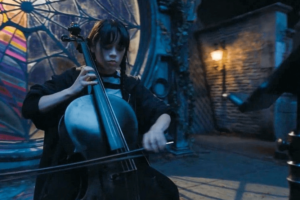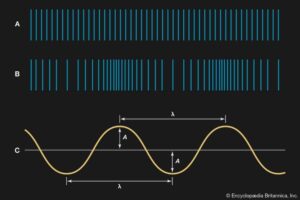It may sound like a made-up term only, but it is a music theory. Musicians use it to create unique and attention-grabbing chord progressions. Negative harmony – what is it?
This musical term is a harmonic tool that musicians use for their improvisations. It is an effective improvisation tool because it will enable you to create a new and unique sound. By using this tool, you can make your music more attractive to the ears.
In music theory, the idea behind negative harmony is high-level. You need to transpose a lot of notes to get the desired effects. In music circles, they describe this process as inverting notes around a certain axis.
Read on to learn more about negative harmony, what it is, how it works, and some examples of how it is done.
Negative Harmony

Tool That Enables Musicians Make Unique Improvisations
A negative harmony is a tool that musicians use to make interesting and unique improvisations. Records show that this theory started with Ernst Levy, a Swiss musicologist, pianist, conductor, and composer from 1895 to 1981. By using this tool, you can create new sounds.
High-level and Complex Concept
In music theory, negative harmony is a very high-level and complex concept. You need to transpose a lot of notes into other notes to achieve the desired effect. Musicians call it inverting notes around a particular axis.
Ernst Levy Came Out with Negative Harmony as a Concept
In his book titled “A Theory of Harmony,” Ernst Levy first came out with the concept of ‘negative harmony.’ Levy discussed the idea of polarity in his book. But his idea was not accepted by the mainstream until Jacob Collier, a musician, resurrected the concept in 2017 and popularized it.
Essentially, Levy described the pitch axis theory that he applied to chord roots instead of the melody. There are several harmonic considerations that he described in his book, which later became part of the theoretical fundamentals of negative harmony.
So, while it may sound like a made-up term, it is a music theory recognized in music circles today. The theory is very complex and multi-layered and involves so many calculations. But if you use this theory, you can create never-heard-of melodies and chord progressions that are also very interesting to listen to.
What Is an Acciaccatura in Music?
Negative Harmony and Its Relation to Harmony
What Is Harmony?
To properly appreciate what negative harmony is, how it works and what it does, you need to know the fundamental meaning of harmony. Harmony is when you have more than one pitch or note that is sounding or being produced simultaneously.
They can be two notes sounding together, usually considered an interval, and less commonly a dyad. It could be a chord if the sound is produced simultaneously by three or more notes.
Horizontal and Vertical Aspects
In music, there are what are called ‘horizontal’ aspects. These aspects are represented by the melody and the rhythm of the music. Aside from horizontal aspects, there are also ‘vertical’ aspects in music represented by harmony.
Harmony is also concerned about the whole realm of notes and pitches and how they relate to each other in a particular music piece. For instance, the system that uses twelve notes per octave is what they call “Western Harmony.” And when the chords in a certain song are based on just one particular diatonic scale, they say that that particular song has ‘tonal harmony.’
Negative Harmony Is Based on Inverting the Notes and Chords
With negative harmony, it is different. This harmony is based on inverting the notes and chords around a specific axis. When Ernst Levy wrote about this theory, he said that in a music piece with a tonal center, any music piece based on a key, every note, and chord played, would have a ‘negative’ opposite note and chord.
You will be able to find negative notes and chords by inverting the regular chords of the song around an axis using the root tonic note and the note that is the Perfect 5th above it. Inverting the note is just simply rotating or flipping it around. For instance, if your music piece is in the key of C, the axis is located between the notes C to G.
Coleman Developed the Theory Further
Steve Coleman, a saxophonist, used the concept of Ernst Levy and worked and developed the theory further. He first coined the term negative harmony, although many composers and musicians have been toying with the theory and using it for a long time.
A Simple Explanation of How Negative Harmony Works

The negative harmony theory is a very high-level concept that is why it is not very easy to understand. Some people believe that the term is just a made-up word. They say it is a made-up term for a music theory that already has a perfect name. The term, they believe, is ‘inverted.’
Applying the Negative Harmony Concept
Let’s assume that the melody of a song goes like this: C-E-G-F-D.
That means you will go up a major third, then up again a minor third, then down a major second, and then down again a minor third.
If you apply the theory of negative harmony, you have to do the following:
- Go down a major third (instead of going up a major third), from C to Ab;
- Go down a minor third (instead of going up a minor third), from Ab to F;
- Then go up a major second (instead of going down a major second), from F to G; and
- Then go up a minor third (instead of going down a minor third), from G to Bb.
In effect, your new (inverted) melody will look like this: C-Ab-F-G-Bb.
Original Melody but the Intervals Were Inverted
It is still the original melody, but the intervals were inverted. Composers use this technique to create new music from old compositions that they have already written. These new compositions are then given the classification of transformations.
Sample That Involves Chord Progressions
Instead of a melody, let me give you an example that involves chord progressions, such as Cmaj7->Em7->G9->Fmaj7->Dm7.
By using the same chord types that you used in the inverted melody, you will have:
Cmaj7->Abm7->F9->Gmaj7->Bbm7.
You will notice that the root intervals have moved in the opposite direction when compared to the original.
Negative Harmony Equals Symmetrical Harmony
Some people say that negative harmony can also be called symmetrical harmony. They say that it would be easier if the substitution method was made simpler so that a musician can create a negative or symmetrical chord that can be played instead.
The concept is that you are allowed to mirror anything by just choosing the location of the axis. For example, think of the numbers -5 -4 -3 -2 -1 0 1 2 3 4 5. As you can see, negative numbers create symmetry to positive numbers since they have an axis 0.
Again, what is negative harmony? Negative Harmony refers to a harmonic tool musician can use in creating new and unique sounds. Ernst Levy, a Swiss musicologist, pianist, composer, and conductor, wrote about this concept.
How to Create a Negative Chord
Here is one method of creating a negative chord. This will help you better understand the concept of negative harmony. If you want to create a negative chord for the key of C, here is what you need to do:
- Get the tonic – which is C
- Find the dominant – which is G
- Get the midpoint of the tonic and the dominant – which is E
- What you get in step c is the axis of symmetry – that’s E again.
- The symmetrical counterpart one half step above E is one half step below E.
- The symmetrical counterpart of F is D and F# is Db.
- Choose any chord in the basic key (for example, G7).
- Choose the notes that constitute that chord – which is G B D F.
- Get their symmetrical counterparts which are C Ab F D.
- Determine the name of the chord that compose the counterparts – it could either be F minor 6th or D half diminished.
Negative Harmony Examples

Here are some additional examples of negative harmony as it affects the melody, the chords, and the chord progressions:
1. Melodies
There is a method of getting negative melodies. This is how it is done:
- Place the positive melody below the negative G-Major Scale, that is, the melody C D F G E is 1 2 4 5 3
- Get its negative counterpart, that is, go down the negative G-Major Scale using the same structure interval of -1 -2 -4 -5 -3.
- The melody will be G F D C Eb.
2. Chords
You can use the same procedure in creating negative chords. The C-Major Triad is C E G or 1 3 5. Place this structure interval down the negative G-Major Scale, and you will get G Eb C. This is a major triad produced from top to bottom.
G is the ‘creator,’ one major third down is Eb, and one minor third down is C. In other words, the new chord has the same structure interval as its original chord but in the reverse direction. Your ears cannot be trained to listen to this chord as an inverted major triad. What you will hear is a C-Minor Triad. However, it is alright to think of it this way.
3. Harmonic Progressions
Let’s take the triads in the key of C:
- C-major will become G Eb C. That gives you a negative G-major. What you will hear if you adopt it to the positive world is a C-minor chord.
- G-major will become C Ab F. That gives you a negative C-major. What you will hear is an F-minor.
For complex chords, you need to add extra notes to the basic triad:
- Cmaj7 will become G EB C Ab. But what you will hear is a Cm(b6). It is not Abmaj. Remember that you need to add the extra notes to the basic triad. So, at first there is the Cm, then the b6 is added.
- Dmin7 will become F D Bb G. But you will hear a Bb6.
- G7 will become C Ab F D. What you will hear is Fm6 and not Dm7(b5). Take note that you need to add the 6th to the basic Fm-chord.
- The cadence Dm7 G7 Cmaj7 becomes a negative II V I. The sounds that will come out are Bb6 Fm6 Cm(b6)
Conclusion: Negative Harmony – What Is It?
A negative harmony is a tool that musicians use to create harmony. They use it to create unique and interesting improvisations. In that way, negative harmony is an effective improvisation tool because it can make your music different and more interesting to the ears.
In music theory, the idea of negative harmony is a high-level concept. It is complicated because you have to transpose a lot of notes to achieve what you want to create. Musicians who dab in negative harmony describe it as the process of inverting notes around a particular axis.
Read next:



